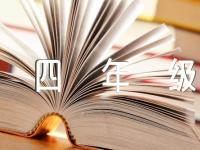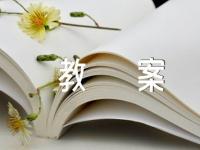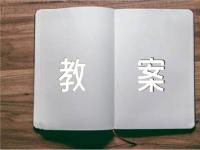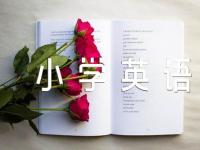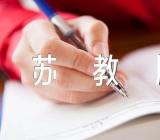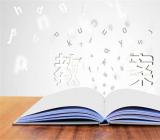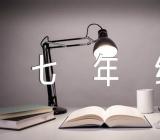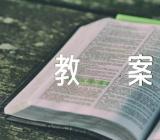【www.shanpow.com--英语教案】

Step I.Revision
Check the homework with the whole class.
Step II. Warming up
Ask the students to read the instructions and make sure they know what to do, and then have a discussion about the two pictures.
T: Today, before we begin our reading, I’d like to ask you a question, “What is the biggest sound you have heard in your life?”
S1: The sound of wind that blew in a winter night when I was very young. It sounded like a ghost who was howling. I was very frightened at that time.
S2: The biggest noise was the one that I heard when my neighbor was quarrelling with his wife. Perhaps, they broke their TV set.
T: That’s too terrible.
S3: The noise when planes take off.
S4: The sound of trains.
T: Good! I agree that all of them are big sound. But did you once heard the sound that the heaven falls and the earth cracks, in Chinese it is 天崩地裂?
Ss: No, we have no chance to hear that.
T: If there is a sound like this, what is it?
S5: When someone hears something unexpected and terrible. For example, when one of his loved families dies, he will feel this sound.
T: Terrific! You are using a literary way to express the sound.
S6: When an earthquake happens.
T: Great! I have waited for this answer for a long time. Today we’ll learn something about earthquakes. I think most of us have heard of earthquakes. Can you imagine how terrible it is ?
S7: The earth is shaking . All the buildings will fall down.
S8: Many people will die. And perhaps many children will lose their parents.
T: Yeah, earthquakes are disasters to everybody. Now look at the two pictures of Tangshan and San Francisco. Can you describe what you see in the pictures?
S1: Tangshan is a beautiful city. It has beautiful gardens, broad roads and some tall buildings.
S2: From the picture of San Francisco,I can see that it is a very big city. There are many tall buildings thickly standing on the earth. I think the population of the city is very large.
T: Good! What will happen if there has been a big earthquake in these two cities? Work in pairs and discuss it. Then I’ll ask so me of you to show your opinion.
Step III.Pre-reading
There are two questions in this part. Both are very interesting. The first one c
an more or less reveal the students’ values; while the second one can enlarge their imagination. No matter what their answers are, as long as they have given careful thoughts to the situations, their answers should be good.
T: Now, let’s look at the pictures. What are the predictions of an earthquake?
S1: Before an earthquake animals will become nervous. Cows, pigs, horses and dogs will be upset. And people can see mice running about. If the earthquake happens during winter, people can even see snakes.
T: Terrific! Where did you get this knowledge?
S1: From geography. I like it.
T: good. Sit down please.
S2: Madam, I don’t know the meaning of the picture with two women.
T: It doesn’t matter. You will know it soon after reading our text. OK. Imagine there is an earthquake now, and your home is shaking, at this moment you have no time to take any other things but one, what will it be?
S3: I’ll take all my money. People can’t live without money.
S4: I will take as much water as possible. Because it is said that people can keep alive for nearly 7 days by drinking without any food
S5: In that case, I’d rather take some apples, so that besides drinking, I can also eat.
S6: I will carry my grandma. She is my most loved person in this world. She brought me up.
T: What a dutiful child you are! I’m very glad to hear that. Sit down please! It seems that all of you know what you should do during an earthquake. OK. Let’s read our text, and see what it tells us.
Step IV.Reading
In this part, teacher should ask the students to read the passage quickly for the first time to get the general idea of the passage. Ask them to pay attention to the first sentence of each paragraph. This can help them finish exercise3 in Comprehention. It is about the main idea of each paragraph. Then ask them to read the text again carefully to obtain some details. Before reading for the second time, show some questions on the screen, and let the students read the questions first. These questions can guide them to have a good understanding about the text. They can also make preparations for Exs1-2,which are about details.
Skimming
T: At first I’d like to read the text quickly to get the general idea of the article. While reading, you should pay attention to the sentence of each paragraph.
T: Have you got the general idea of the text?
Ss: Yes.
T: What is it?
S1: There is no quick answer to this question . Are you suggesting us that the general idea is the mixture of the first sentences of each paragraph?
T: Sure.
S1:OK. That’s easy. The main idea of the passage is some signs of the earthquake, and what would happen during the quake.
T: Good, sit down please. In fact, while we are answering the questions, we have involved the sequence, the functional item for this unit. (Teacher writes the word on the blackboard ) Do you understand the meaning of the word?
Ss: No.
T: Sequence means the order of the events. It can tell us which event happens first, and which happens later. Do you know the sequence that is used in our text?
S3: Yes. At first, the text tells us something that happened before the quake, then it tells us the things that happened during the quake and at last it tells us the things that happened after the earthquake.
T: Quite right! Now please look at the screen, these are the first sentences of each paragraph. Read them and think if they are the main idea of the text. If necessary, you may make some changes to make more exact.
Teacher shows the screen and gives a little time to think it over.
1.Strange things were happening in the countryside in the northeast Hebei.
2.The disaster happened and caused a lot of loss.
3. All hope was not lost.
Careful reading
T: Now, it’s time for us to read the text carefully. But before reading, you should read some questions first. These questions may help you get some information quickly and easily. Now look at the screen, and read the questions.
Show on the screen
1.What natural signs of a coming disaster were there?
2.Can you think of some reasons why these signs weren’t noticed?
3.What events probably made the disaster worse?
4.What situations probably made the disaster worse?
5.How were the survivors held?
Step V. Extension
Show the questions on the screen.
1.From whose point of view are events described? How do you know?
2.What is the mood of this passage? How is it created?
3.Why do you think the writer chooses to express his feelings about the quake rather than simply reporting what had happened?
4.Why is the title A NIGHT THE EARTH DIDN’T SLEEP?
5.What does the sentence “Slowly, the city began to breathe again.” mean?
Answers:
1. He uses third-person to describe the quake. His description is very objective. For example, the second sentence in the third paragraph. The writer says: “Everywhere they looked nearly everything was destroyed.” The writer uses they instead of we.
2.The mood is serious and a bit sad. It is created by giving details of how many people and animals were killed or injured, and how many buildings were destroyed.
3.Although the writer was not there, he felt sad for the people of Tangshan. He knows that some personal feelings will make the reading more interesting.
4.I think the reason is that, as usual, night is the time to sleep, and night should be safe and quiet. But that night everything changed. The writer uses A NIGHT THE EARTH DIDN’T SLEEP as a title to show how terrible and how unusual the night was.
5.Here we can see that the writer compared the city to a person who suffered a lot in the disaster. He felt her pain, and he worried about her. So when he said that people came to help her, we can feel his feelings to the city. The city will not die, she has hope and she can recover from the pain.
Step VI Comprehending
Answers to Exx1-3
1.1. C 2. E 3.B 4.D 5.A
2.1. The walls of the villages wells had cracks in them.
2 .Roads got huge cracks
3. Brick buildings were destroyed.
4. The army helped the survivors.
5. Shelters were put up for those with no homes.
3.1. Strange things were happening in the countryside in northeast Hebei..
1.The disaster happened and caused a lot of loss.
2.All hope was not lost.
